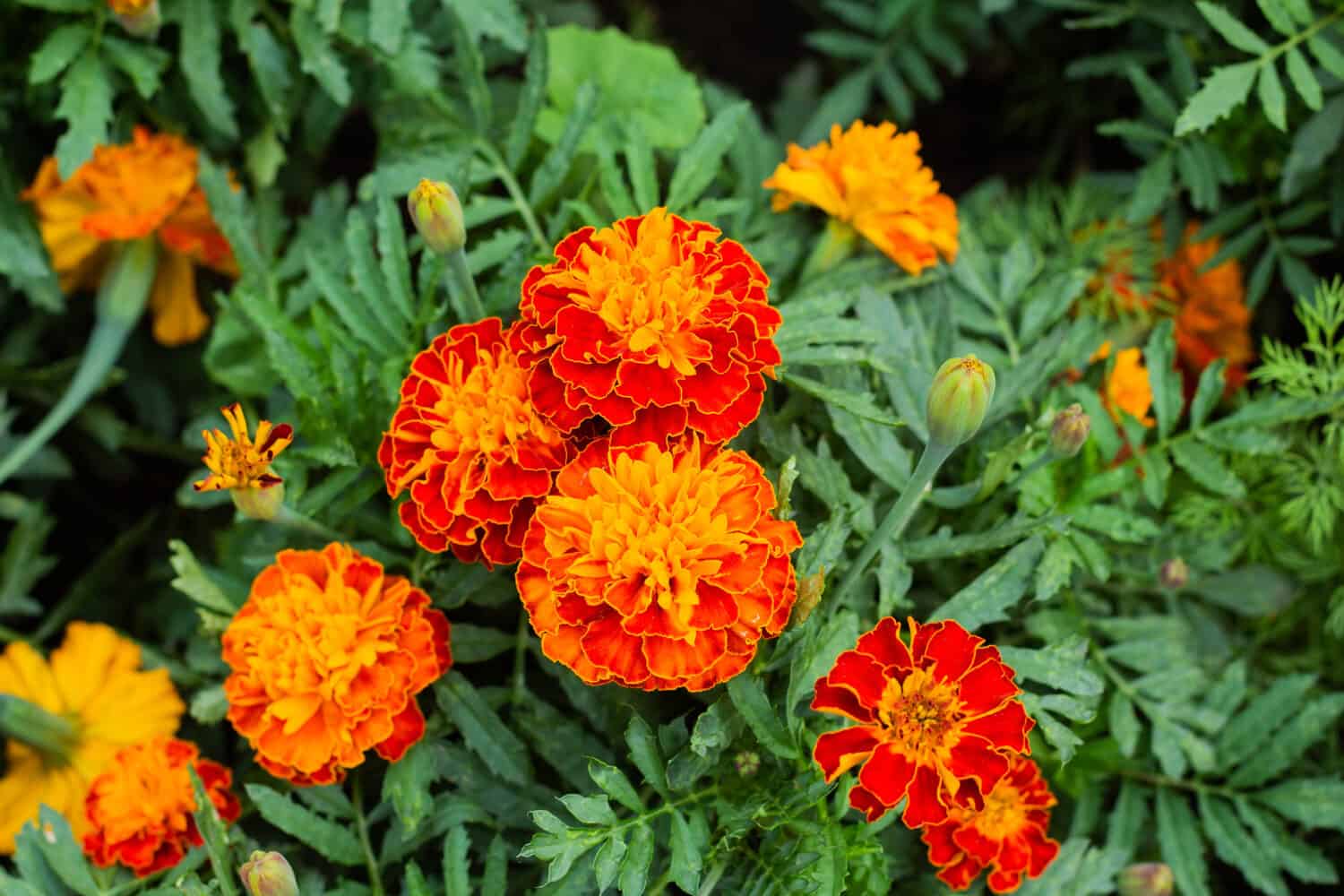It’s time to dive into the thriving wonderland of USDA hardiness zone 10; a paradise where warm weather encourages flowers to bloom all year round! But, with so many choices, picking the perfect annuals can feel like trying to find a needle in a haystack. Fear not, flower enthusiasts! We’re here to guide you through this lush maze, pointing out the most dazzling annual blooms to jazz up your garden party.
In this article, we’re exploring flowers that are not just show-stoppers, but champions of the heat, tenacious in the face of drought, and willing to put on a performance that lasts. From sun-loving marigolds to fragrant petunias, we’re on a journey to help your garden embody the spirit of Zone 10. So, fasten your garden gloves, and let’s take a stroll through this floral paradise together!
1. Marigolds
Classification: Tagetes spp.
Marigolds are vibrant, sun-loving flowers with a rustic charm. Native to North and South America, they are an integral part of traditional celebrations and gardens. Boasting brilliant colors from sunny yellows to fiery oranges and rich golds, marigolds command attention with their bold hues and distinctive fragrance. They also serve a practical purpose beyond their aesthetic appeal.
These blossoms are natural pest deterrents, helping to keep harmful insects away from vegetables and other plants in the garden. This trait makes them a preferred choice for organic gardeners aiming to maintain a healthy, chemical-free environment.
What’s more, marigolds are quite hardy and can thrive in a variety of conditions, particularly in USDA hardiness zone 10. This zone features warm temperatures year-round, a factor that promotes marigold growth as these flowers adore sunlight and well-drained soil. The lack of frost also ensures the plant’s survival, allowing it to bloom continuously.
While marigolds require minimal care, their radiant beauty and practical benefits make them a significant addition to any garden. Their resilience in warmer climates, such as Zone 10, mirrors the sunny, unstoppable spirit of these little wonders.
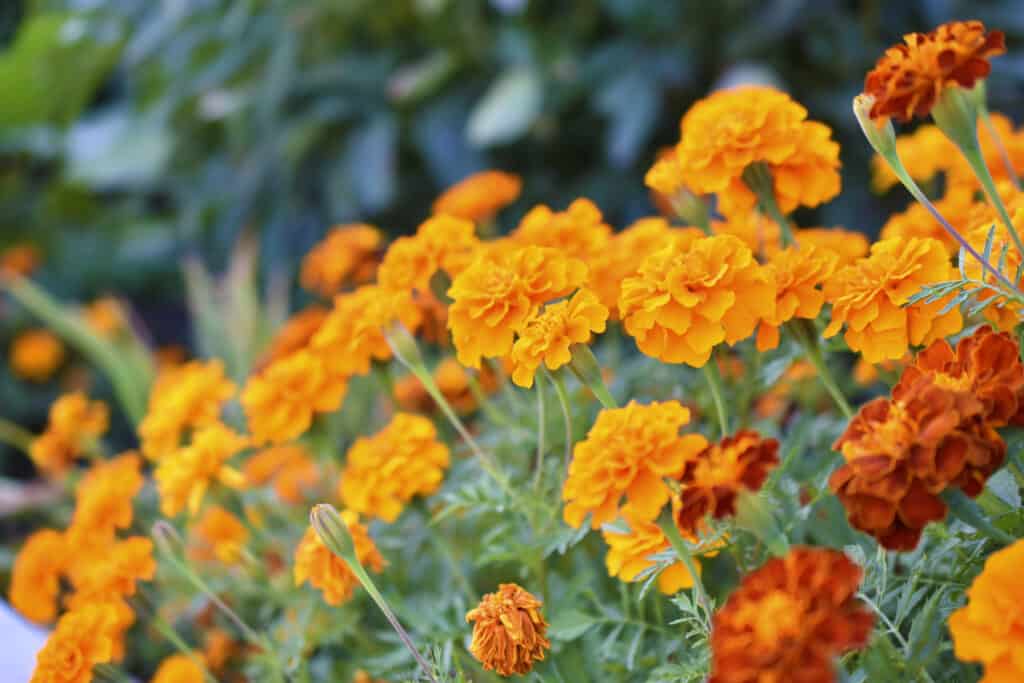
Marigolds can be found thriving throughout Zone 10, especially in public parks, gardens, and meridians.
©iStock.com/Valeriy Lushchikov
2. Sunflowers
Classification: Helianthus spp.
Sunflowers, those cheerful giants of the plant world, are known for their bright yellow petals and towering height. They’re a lovely nod to the sun above us, in both name and nature, turning their heads to follow its path across the sky – a phenomenon known as heliotropism.
Besides their obvious beauty, sunflowers offer several other perks. For one, they are a great source of seeds that are chock-full of essential nutrients. Sunflower seeds are an excellent snack, rich in healthy fats, proteins, and vitamins like E and B1. They also yield a light, heart-friendly oil.
Sunflowers are champions when it comes to environmental clean-up, too. Their roots can extract harmful pollutants from the soil, a process known as phytoremediation, contributing to a healthier planet.
As for why they thrive particularly well in USDA hardiness zone 10, it comes down to their love for the sun. This zone’s steady, warm temperatures offer an ideal environment for these sun-worshippers. Moreover, their drought tolerance makes them perfect for the low rainfall conditions commonly found here. In such conditions, sunflowers flourish, reminding us all to turn our faces towards the sun and stand tall, no matter what.
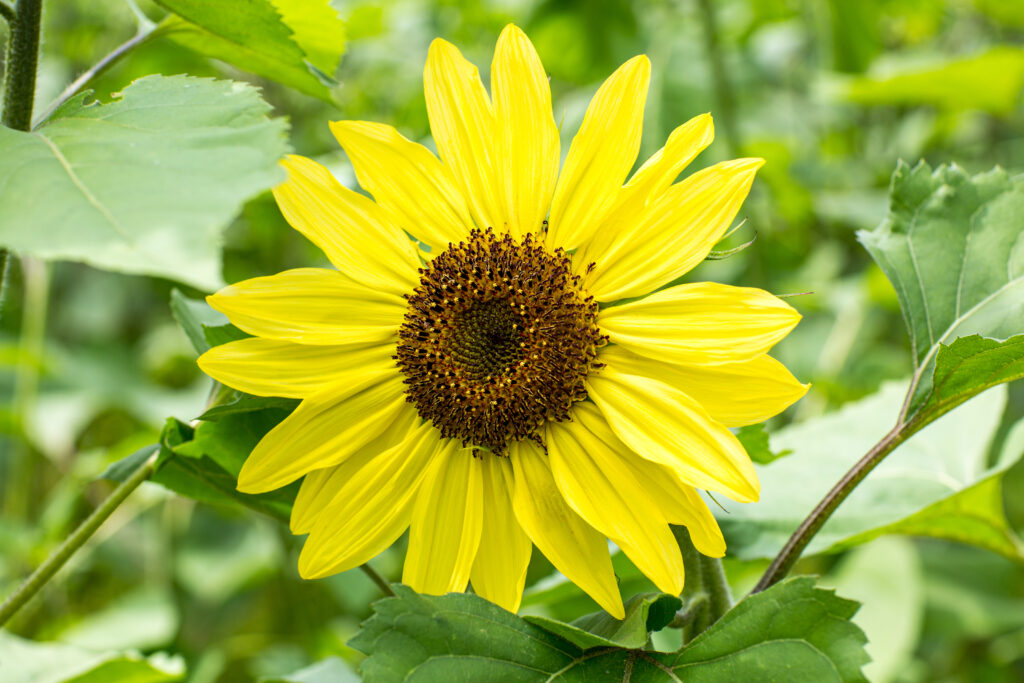
Sunflower seeds are quite nutritious in addition to being quite tasty, which makes sunflowers excellent for both aesthetics and nutrition.
©Dee Carpenter Originals/Shutterstock.com
3. Zinnias
Classification: Zinnia spp.
Zinnias, splendid and lively, are one of the summer’s most delightful floral companions. These charming bloomers light up gardens with a color palette stretching from radiant reds to soft pastels and stark whites. Hailing from the sun-drenched wilds of Mexico, zinnias have a natural affinity for heat and brightness.
Among their standout features, zinnias sport a long blooming season, offering gardens a riot of color well into late summer and autumn. Their sturdy and vibrant blooms also make excellent cut flowers, breathing life into indoor spaces and providing a vibrant tableau that lasts for days.
In the ecological scheme, zinnias are something of a hero. They are known to attract pollinators such as butterflies and bees, assisting in the vital process of pollination, which supports biodiversity and food production.
When it comes to thriving in USDA hardiness zone 10, zinnias’ native fondness for sun and heat come into play. This zone offers them ample sunlight and high temperatures they need to flourish. The mild winters also ensure they don’t face extreme cold that could harm them. Amidst the balmy climate of Zone 10, zinnias can bloom profusely, bringing their burst of color and energy to the landscape.
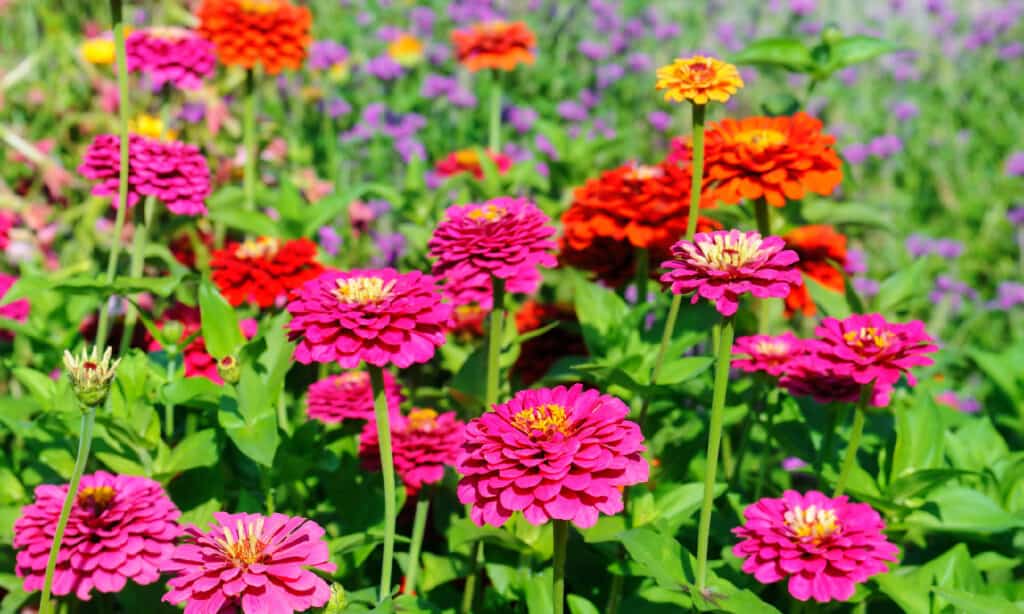
Zinnia flowers are very beautiful but are also pollinator powerhouses that attract a wide range of butterflies, bees, and other vital pollinators.
©iStock.com/AlinaMD
4. Celosia
Classification: Celosia spp.
In the vast spectrum of floral beauty, celosias hold a unique place with their peculiar, striking blooms. These annual flowering plants, originating from tropical regions in Africa and Asia, are easily recognized by their fiery plumes, brain-like crests, or spiky flowers, bursting in hues of red, yellow, pink, and orange.
Celosias bring a multifaceted charm to any garden. Not only do their unusual blooms captivate the eye, but they also attract a diverse array of beneficial pollinators. Butterflies and bees are often seen hovering around their blooms, contributing to an overall healthier garden ecosystem.
Beyond their ornamental value, celosias carry nutritional significance. In some cultures, their leaves and flowers are eaten as vegetables, rich in micronutrients and antioxidants.
USDA hardiness zone 10 is a sweet spot for celosias, aligning with their tropical roots. This zone offers high temperatures and ample sunlight, two key conditions that celosias relish. The gentle winters in this zone also play a role, sparing the celosias from harsh frosts that could damage their growth. Within this warm, sun-bathed zone, celosias flourish, adding their remarkable profiles and vibrant colors to the diverse tapestry of the garden.
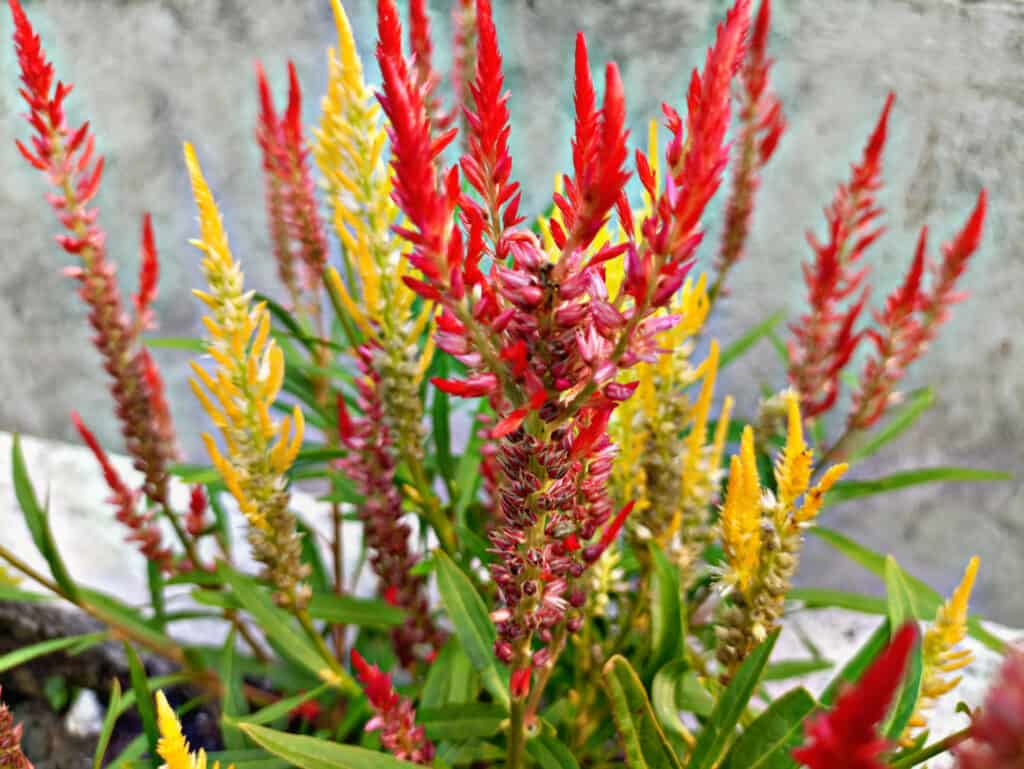
Celosia is a stunning plant with unusual, ornamental blooms that can add some dimension and diversity to a Zone 10 flower garden.
©iStock.com/Khodar Adi Handoko
5. Petunias
Classification: Petunia spp.
Petunias, with their trumpet-shaped blooms and lush colors, is like the charming melodies of a garden symphony. Originally from South America, these annual or perennial plants are beloved for their easy care and long flowering period, spanning spring to frost.
One of the most endearing traits of petunias is their wide-ranging palette. They dazzle in a medley of colors, from pure whites and soft pinks to deep purples and vibrant reds. Some varieties even boast bicolor or veined petals, bringing a dynamic visual texture to garden beds, hanging baskets, or containers.
Beyond their aesthetic appeal, petunias attract beneficial pollinators, playing their part in supporting local ecosystems. Butterflies and hummingbirds, in particular, are drawn to their vibrant colors and sweet nectar.
The reason why petunias thrive so well in USDA hardiness zone 10 is rooted in their love for warmth and sunlight. This zone offers a consistent climate with moderate rainfall, plenty of sunshine, and mild winters – all of which allow petunias to bloom to their heart’s content. Given these ideal conditions, petunias unfurl their colorful blooms, serenading the garden with their delicate, lively charm.
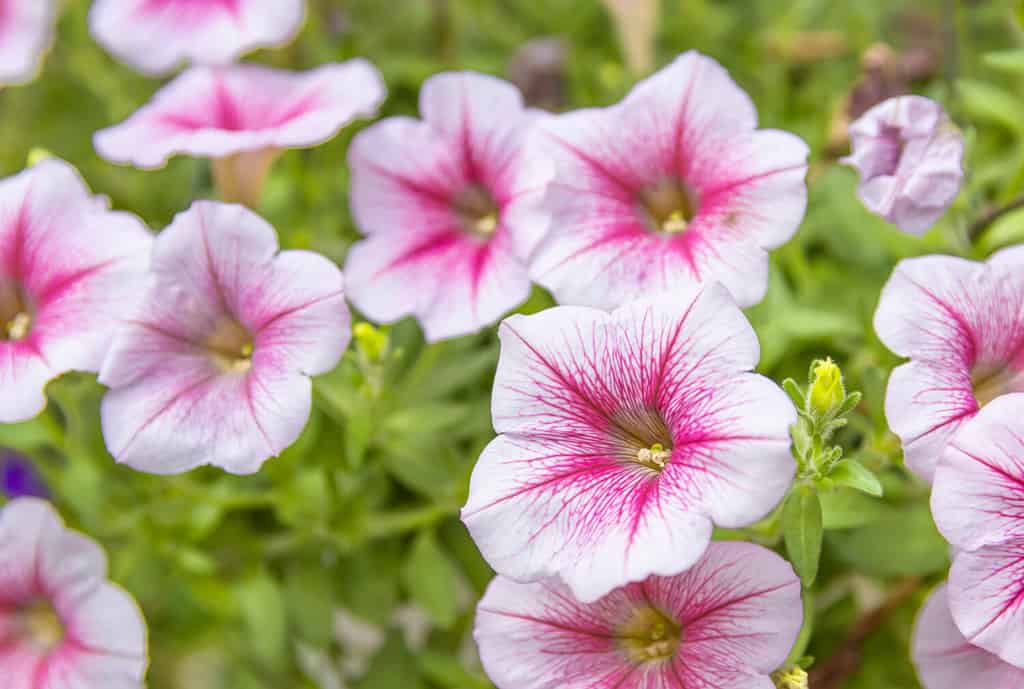
Petunias come in a very wide range of colors and hues, making them ideal for a flower Zone 10 garden that is meant to be as colorful as possible.
©aomnet7/Shutterstock.com
6. Cosmos
Classification: Cosmos spp.
Cosmos are captivating annual flowers with a simple yet graceful charm. They’re native to the meadows of Mexico and owe their name to the Greek word for “ordered universe,” perhaps for their harmonious petal arrangement.
Their blooms, resembling daisies, display a rainbow of colors, from pure white to vibrant pink, rich red, and warm orange. These flowers are not just a treat for our eyes but also provide a banquet for pollinators. Their open-faced flowers are an irresistible invitation to bees, butterflies, and even hummingbirds, playing a vital role in local ecosystems.
In addition to their beauty and ecological benefits, cosmos are prized for their ease of cultivation. They’re forgiving plants, tolerating poor soil conditions, and displaying impressive drought resistance.
USDA hardiness zone 10, with its abundant sunlight and moderate to high temperatures, proves to be a nurturing haven for cosmos. Here, they can soak up the sunshine they love without facing severe frost. The region’s well-draining soil is another bonus, suiting cosmos’ preference for drier roots. Amidst these conditions, cosmos bloom generously, infusing the landscape with its delightful colors and serene beauty.
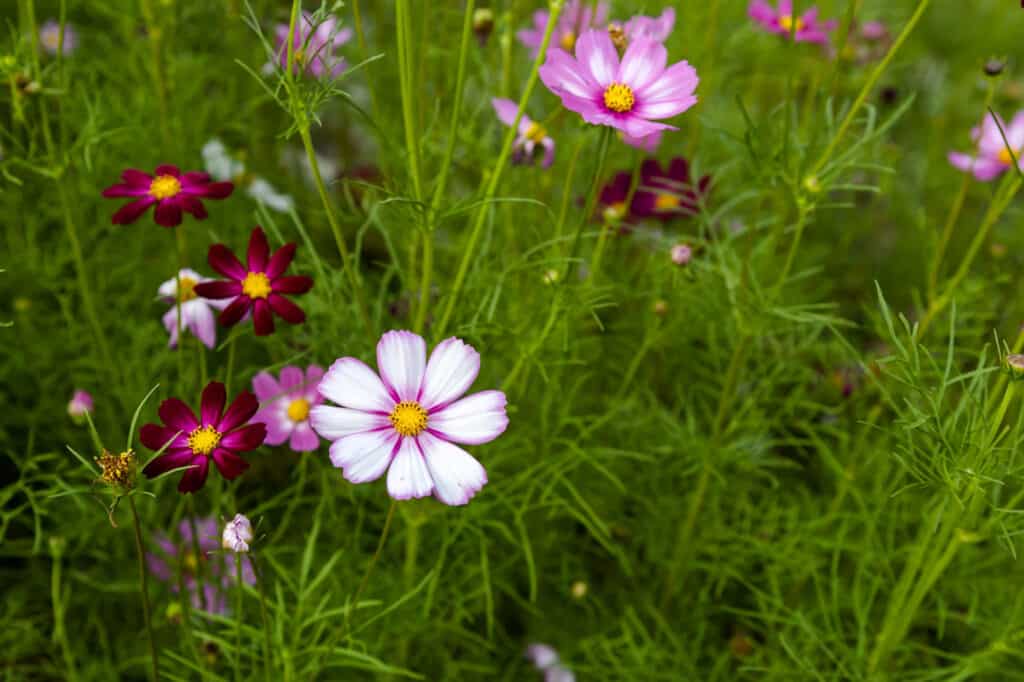
Cosmos are great additions to any Zone 10 flower garden, provided they are planted in well-draining soil.
©lotlenglu/Shutterstock.com
7. Vinca
Classification: Catharanthus roseus
Vinca flowers, also known as periwinkles, are eye-catching, low-maintenance plants that add a vibrant touch to any landscape. With their roots in Madagascar, these annual or perennial plants exhibit glossy, dark-green leaves and charming, star-shaped flowers. Their color spectrum includes soft whites, pinks, purples, and even bold reds.
Apart from their aesthetic allure, vincas possess several practical benefits. They’re remarkably drought-tolerant, thriving in dry, sunny conditions where many other plants falter. This trait, coupled with their resistance to many common pests and diseases, makes them a robust, easy-care option for busy gardeners.
In terms of ecological contributions, vincas serve as an excellent ground cover, helping to prevent soil erosion. Their blossoms also attract various pollinators, thus playing a vital role in maintaining biodiversity.
USDA hardiness zone 10 provides an ideal environment for vinca flowers due to its high temperatures and abundant sunshine. These conditions mimic vincas’ native tropical habitat, enabling them to flourish. The absence of severe frosts, typical in this zone, also aids their survival. Thus, amid the sunny and warm climate of Zone 10, vincas unfold their vibrant hues, adding a touch of resilient beauty to the landscape.
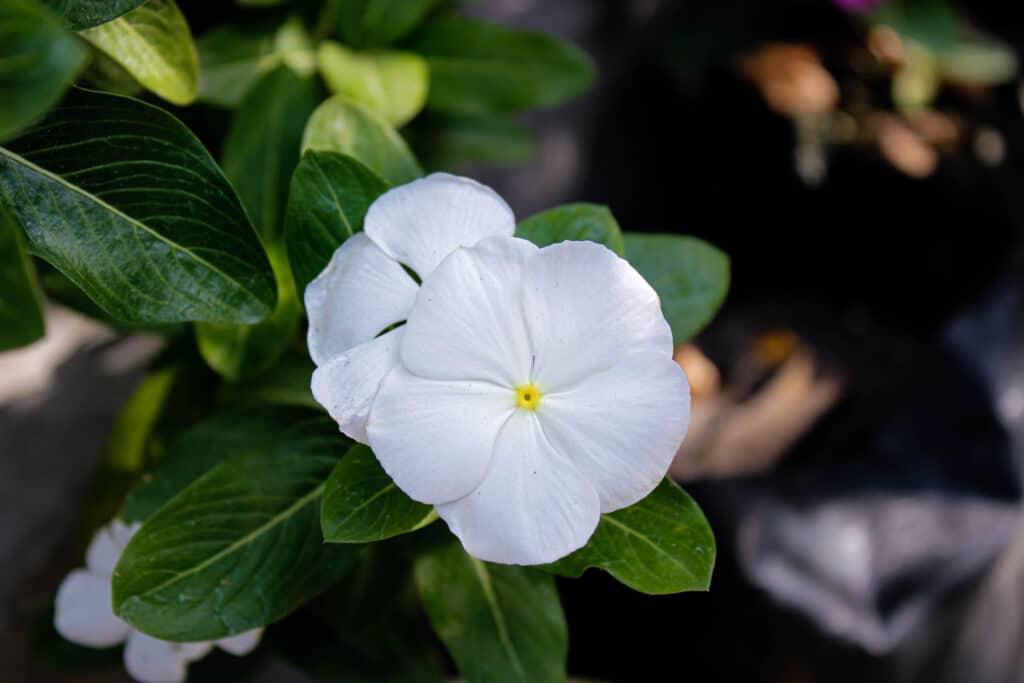
Periwinkles are quite tolerant of sunshine and heat, but they do have fairly strict water and soil requirements to consider.
©iStock.com/Prasetyani i
8. Portulaca
Classification: Portulaca grandiflora
Portulaca flowers, also known as moss roses, are delightful annuals with a vivacious spirit. Hailing from the dry regions of South America, these low-growing plants offer dazzling, rose-like blooms in a riot of colors, such as brilliant reds, yellows, pinks, oranges, and whites.
Portulaca’s benefits extend beyond its visual appeal. They are drought-tolerant plants, making them perfect for gardeners desiring low-maintenance, heat-loving blooms. They’re also exceptional at filling gaps in rock gardens, adding a splash of color to otherwise bare spots.
The flowers of Portulaca are a feast for pollinators. Their nectar-rich centers draw bees and butterflies, thereby fostering a vibrant ecosystem. Moreover, in some cultures, the leaves of this plant are consumed for their rich omega-3 fatty acids.
Portulaca flowers find a happy home in USDA hardiness zone 10. This region’s generous sunlight and high temperatures mimic the conditions of Portulaca’s native habitat. In addition, the well-draining soil typically found in this zone perfectly suits portulaca’s aversion to waterlogged roots. Consequently, within the welcoming bounds of Zone 10, portulacas unfurl their radiant blooms, adding a resilient and colorful charm to the garden panorama.
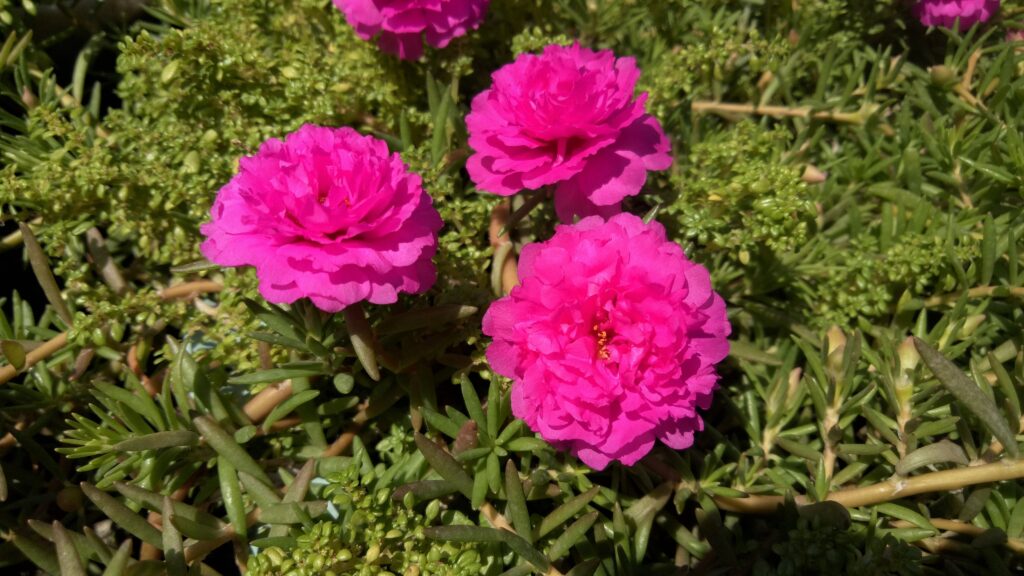
The big, fluffy blooms of the portulaca flower can add a touch of romance and beauty to any Zone 10 garden.
©Purnama Tata/Shutterstock.com
9. Gazania
Classification: Gazania spp.
Gazanias, also known as treasure flowers, are vibrant perennial plants with roots in the southern parts of Africa. They flaunt striking daisy-like blooms, unfurling in a spectrum of colors from fiery oranges and yellows to cool whites and pinks, usually with contrasting bands.
What makes gazanias special, aside from their visual allure, is their hardy nature. They are drought-tolerant plants that can handle high temperatures, making them perfect for sunny, dry gardens. Moreover, their lush foliage serves as an effective ground cover, minimizing soil erosion and weed growth.
Gazanias also play a significant role in promoting biodiversity. Their colorful, open-faced flowers draw in a variety of pollinators, including bees and butterflies, fostering a lively ecosystem.
When it comes to thriving in USDA hardiness zone 10, gazanias find a welcoming habitat. This zone offers high temperatures and abundant sunlight, which are two conditions that the gazanias relish. Also, the zone’s well-draining soil prevents root rot, a problem that could occur in overly moist soils. Thus, under the warm sun of Zone 10, gazanias unfurl their vivid blooms, enriching the garden landscape with their resilient beauty.
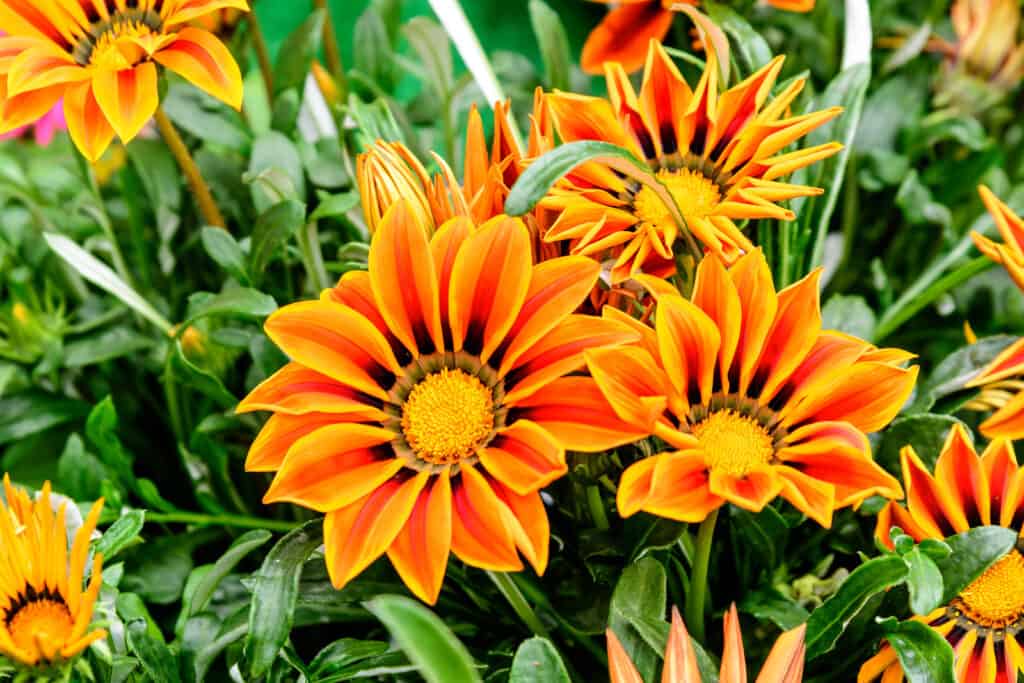
Vivid orange gazania flowers are quite popular in arid environments, including Zone 10 flower gardens.
©iStock.com/Cristina Ionescu
10. Pentas
Classification: Pentas lanceolata
Pentas, also known as Egyptian star flowers, are tropical perennial plants known for their star-shaped clusters of blooms. Originating from Africa and the Arabian Peninsula, these flowers add a splash of color to the garden, with hues ranging from vibrant reds and pinks to peaceful whites and purples.
The benefits of pentas extend beyond their beauty. They are heat and humidity-tolerant, making them suitable for warm, tropical climates. Additionally, their nectar-rich flowers are a magnet for pollinators. Butterflies, bees, and hummingbirds find pentas irresistible, making these plants excellent for promoting biodiversity in your garden.
In terms of medicinal value, some cultures utilize pentas for their traditional healing properties, such as treating digestive and respiratory issues, though further research is needed to validate these uses scientifically.
USDA hardiness zone 10 provides a hospitable environment for pentas due to its warm temperatures and ample sunlight. These conditions resemble pentas’ native habitat, allowing them to thrive. The lack of frost in this zone is another advantage, sparing these tropical plants from potential cold damage. Amid the sunny conditions of zone 10, pentas blossom profusely, making a radiant, lively statement in any landscape.
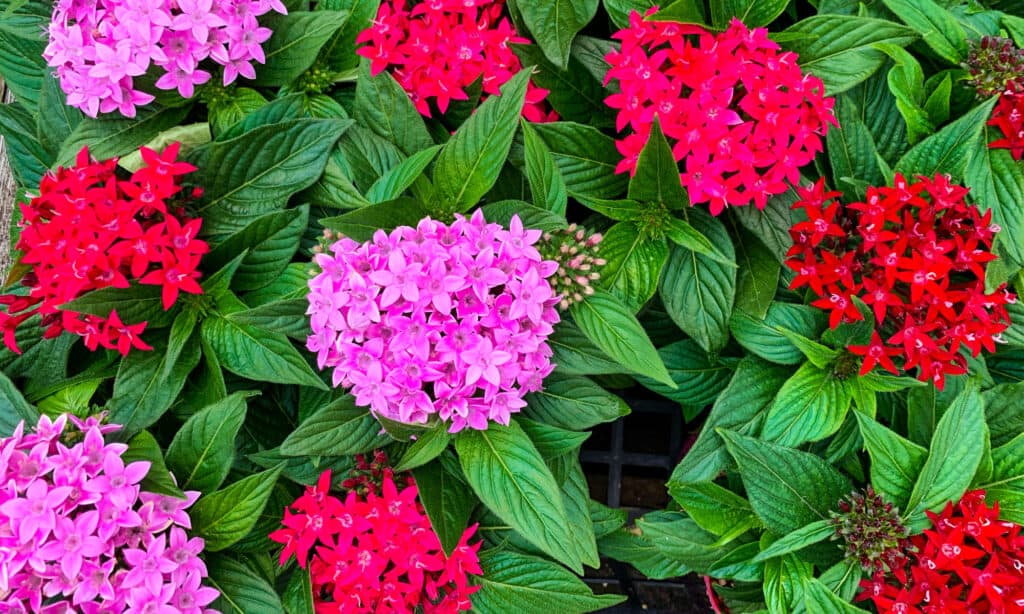
Pentas are quite resilient flowers in Zone 10, mainly because the environment is quite similar to their native tropical environment.
©Nokzd/Shutterstock.com
Summary of the Best Annual Flowers For Zone 10
| # | Flower | Classification |
|---|---|---|
| 1 | Marigolds | Tagetes spp. |
| 2 | Sunflowers | Helianthus spp. |
| 3 | Zinnias | Zinnia spp. |
| 4 | Celosia | Celosia spp. |
| 5 | Petunias | Petunia spp. |
| 6 | Cosmos | Cosmos spp. |
| 7 | Vinca | Catharanthus roseus |
| 8 | Portulaca | Portulaca grandiflora |
| 9 | Gazania | Gazania spp. |
| 10 | Pentas | Pentas lanceolata |
Thank you for reading! Have some feedback for us? Contact the AZ Animals editorial team.

